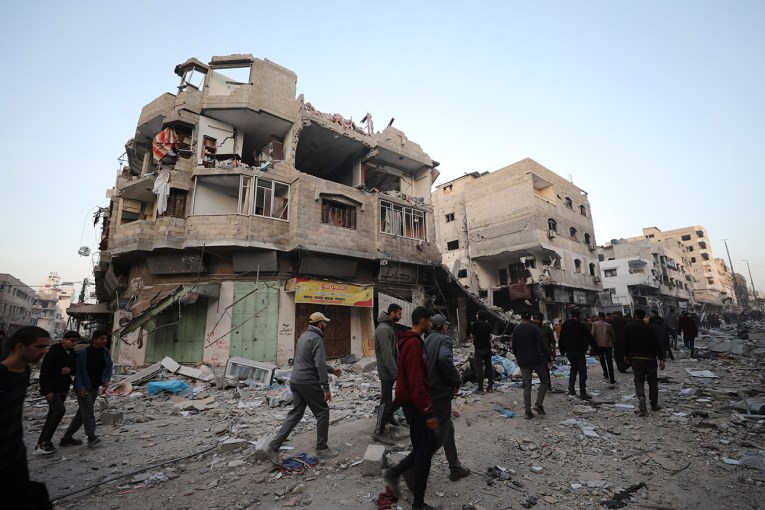Revealed: Secret US mission that secured Iran nuclear deal
• How it happened: World powers reach Iran nuclear deal
With their destination and mission among America’s closest guarded secrets, the small group of officials hand-picked by President Barack Obama boarded a military plane in March.
The travel plans of the US diplomats and foreign policy advisers were not on any public itineraries. No reception greeted them as they landed. But awaiting the Americans in the Gulf sultanate of Oman was the reason for all the secrecy: a delegation of Iranians.
Even America’s closest allies were kept in the dark.
It was at this first high-level gathering at a secure location in the Omani capital of Muscat that the Obama administration began laying the groundwork for this weekend’s historic nuclear pact between world powers and Iran, The Associated Press has learned.
Even America’s closest allies were kept in the dark. Obama first shared the existence of the secret diplomacy with Israeli Prime Minister Benjamin Netanyahu in September, and only then offered a limited recounting of how long the discussions between Iran and the US had been taking place.
The Obama administration then informed the other five nations negotiating alongside the US – Britain, China, France, Germany and Russia. And since then much of their public diplomacy with Iran has focused on incorporating and formalising the progress made in the private talks.
The AP has learned that at least five secret meetings have occurred between top Obama administration and Iranian officials since March.
Deputy Secretary of State William Burns and Jake Sullivan, Vice President Joe Biden’s top foreign policy adviser, led each US delegation. At the most recent face-to-face talks, they were joined by chief US nuclear negotiator Wendy Sherman.
It was at the final get-together that the two sides ultimately agreed on the contours of the pact signed on Sunday by the so-called P5+1 group of nations and Iran, three senior administration officials told the AP on the condition of anonymity.
The Geneva deal provides Iran with about $US7 billion in relief from international sanctions in exchange for Iranian curbs on uranium enrichment and other nuclear activity. All parties pledged to work towards a final accord next year that would remove remaining suspicions in the West that Tehran is trying to assemble an atomic weapons arsenal.
Iran insists its nuclear interest is only in peaceful energy production and medical research. The US and Israel have regularly threatened military action if they believe Iran is about to develop a nuclear weapon.
While the agreement early on Sunday was concluded to great fanfare and global attention, the path there couldn’t have been more secret.
With low expectations, mid-level American officials began in 2011 meeting their Iranian counterparts in Muscat. The process was guided by Sultan Qaboos, Oman’s diminutive but wily monarch, who has cultivated decades of good relations with the US and his region’s two rivals: Sunni-controlled Saudi Arabia and Shi’ite-dominated Iran.
Expectations were kept low for the initial discussions. The officials skirted the big issues and focused primarily on the logistics for setting up higher-level talks. For the US, the big question was whether Iran’s leaders would be willing to secretly negotiate matters of substance with a country they call the “Great Satan”.
The private talks were also a gamble for the US, which cut off diplomatic ties with Iran in 1979 after the Islamic Revolution and the taking of 52 American hostages after rebels stormed the American embassy in Tehran. When Obama decided to send Burns and Sullivan to Oman, Iran was still being governed by hardline president Mahmoud Ahmadinejad.
The American officials achieved some modest progress. They understood that the Iranians in Muscat at least had some authority to negotiate from Ayatollah Ali Khamenei, who has final say on the nuclear program and many other big Iranian issues.
Hoping to keep the channel open, Kerry then made an official visit to Oman in May, ostensibly to push a military deal with the sultanate. Officials said the trip actually focused on maintaining Qaboos’s key mediation role.
Hassan Rouhani’s June election to Iran’s presidency, on a platform of easing the sanctions crippling Iran’s economy and stated willingness to engage with the West, gave a new spark to the US effort.
Two secret meetings were organised immediately after Rouhani took office in August, with the specific goal of advancing the stalled nuclear talks with world powers. Another pair of meetings took place in October.
The private meetings coincided with a public easing of US-Iranian discord. In early August, Obama sent Rouhani a letter congratulating him on his election. The Iranian leader’s response was viewed positively by the White House, which quickly laid the groundwork for the additional secret talks. The US officials said they were convinced the outreach had the blessing of Ayatollah Khamenei, but would not elaborate.
As negotiators worked behind the scenes, speculation swirled over a possible meeting between Obama and Rouhani on the sidelines of the UN General Assembly in September, which both attended, but the meeting never happened largely because of Iranian concerns.
Two days later, though, Obama and Rouhani spoke by phone – the first direct contact between a US and Iranian leader in more than 30 years.
It was only after that Obama-Rouhani phone call that the US began informing allies of the secret talks.








